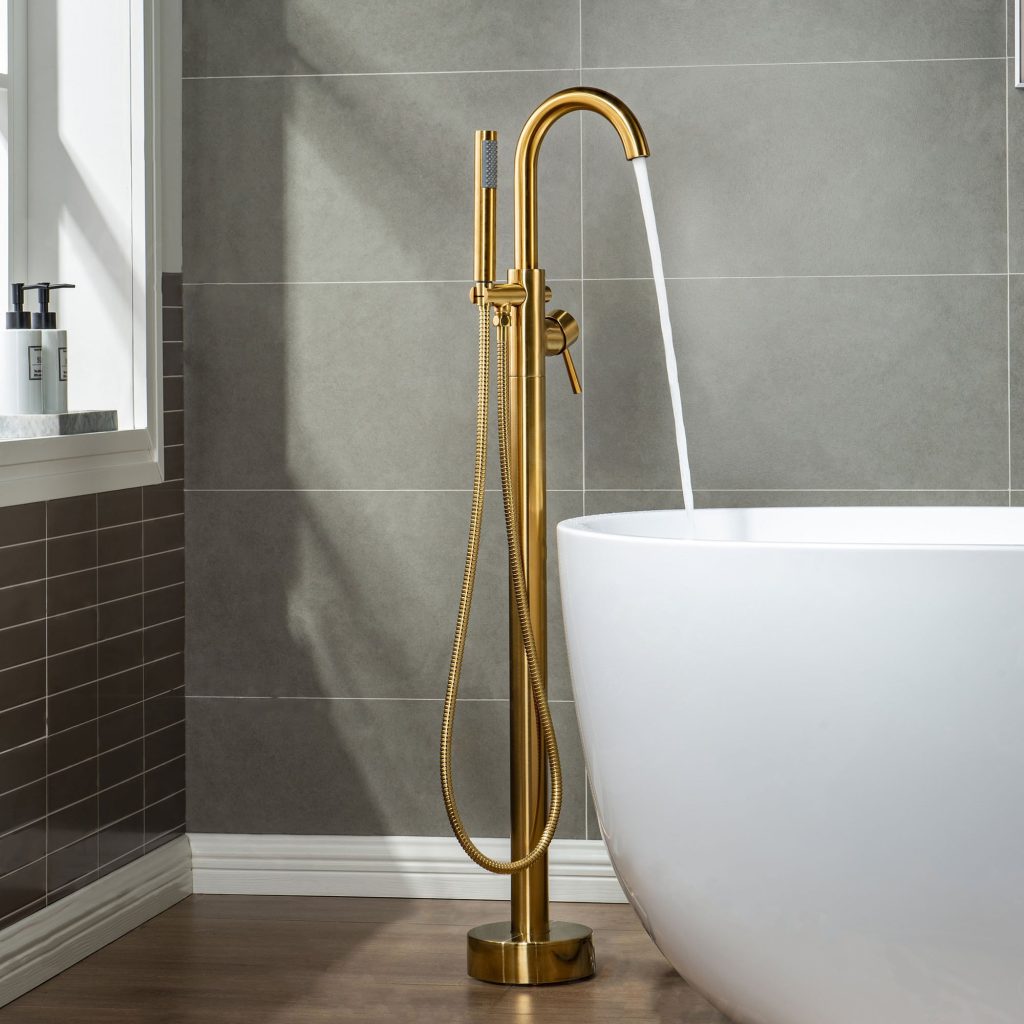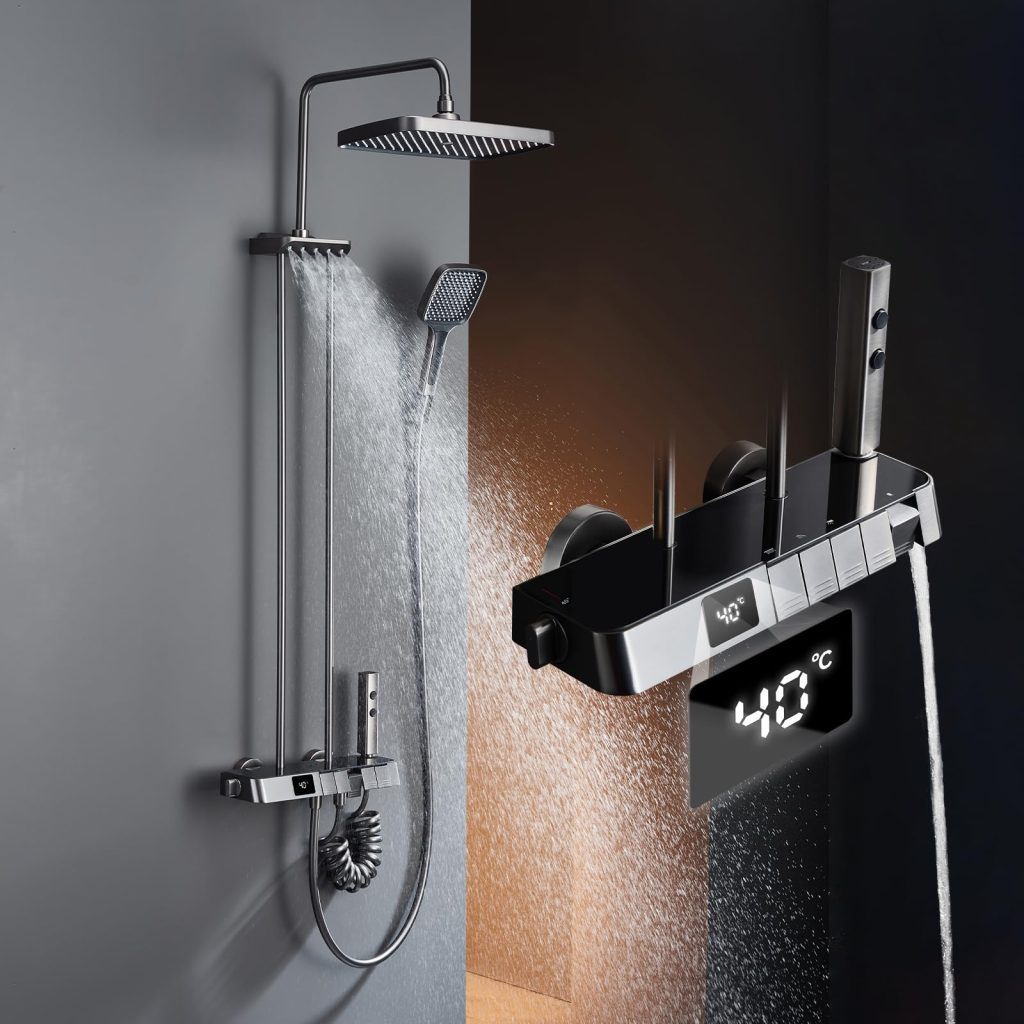Shower faucets installation may seem like a daunting task, but with the right tools and a clear understanding of the process, it can be a straightforward DIY project. In this guide, we will walk you through the step-by-step process of installing a shower faucet, ensuring that you have a fully functional and leak-free fixture in no time.

Gathering your Tools and Materials
Before you begin the installation process, it is important to gather all the necessary tools and materials. This will ensure that you have everything you need on hand and can work efficiently. The following are some of the basic tools and materials you may need:
- Adjustable wrench
- Plumber’s tape
- Channel locks
- Screwdriver
- Measuring tape
- Silicone caulk
- Shower faucet kit
It is important to check the manufacturer’s instructions for the specific tools and materials required for your shower faucet kit, as different models may have slightly different requirements.
Removing the Old Shower Faucet
The first step in installing a new shower faucet is to remove the old fixture. This will involve shutting off the water supply to the shower and then removing the existing faucet. Here’s how to do it:
- Shut off the water supply to the shower by turning off the main water valve. It is important to ensure that the water is completely turned off before proceeding.
- Remove the shower handle by locating the set screw and loosening it with a screwdriver. Once the set screw is removed, you should be able to pull the handle off the faucet.
- Remove the escutcheon plate by unscrewing it from the wall. This may require using a screwdriver or a wrench, depending on the type of plate.
- Use an adjustable wrench to unscrew the old faucet from the pipes. This may require some force, as the faucet may be tightly secured.
Installing the New Shower Faucet
Once the old faucet has been removed, you can begin the process of installing the new shower faucet. Here’s how to do it:
- Read the manufacturer’s instructions carefully to ensure that you are familiar with the specific installation requirements for your new shower faucet.
- Apply plumber’s tape to the threads of the pipes to ensure a watertight seal. This will help to prevent leaks once the new faucet is installed.
- Attach the new faucet to the pipes, using an adjustable wrench to tighten the connections. It is important to ensure that the faucet is securely attached to the pipes and that there are no gaps or spacing between the connections.
- Install the escutcheon plate by screwing it into place on the wall. This will help to cover the holes in the wall and provide a finished look for the faucet.
- Install the shower handle by following the manufacturer’s instructions for your specific model. This may involve attaching the handle to the faucet and securing it in place with a set screw.
- Turn the water supply back on and test the faucet to ensure that it is functioning properly. Check for any leaks and make any necessary adjustments to ensure that the faucet is fully functional.

Applying Silicone Caulk
Once the new faucet is installed and functioning properly, it is important to apply silicone caulk around the edges of the escutcheon plate and any other gaps or openings in the wall. This will help to prevent water from seeping behind the bathtub faucets and causing damage to the wall.
- Use a tube of silicone caulk and a caulking gun to apply a thin, even bead of caulk around the edges of the escutcheon plate and any other gaps or openings in the wall.
- Use your finger or a caulk finishing tool to smooth the caulk and ensure that it creates a watertight seal.
- Allow the caulk to dry according to the manufacturer’s instructions before using the shower.
Shower faucets have that style
Shower faucets are an essential part of any bathroom, providing the perfect balance of water flow and temperature for a comfortable and enjoyable showering experience. There are many different styles of shower faucets to choose from, each offering its own unique features and design elements.
Wall-Mounted Shower Faucets
Wall-mounted shower faucets are a classic and versatile option for any bathroom. These faucets are installed directly onto the wall, allowing for a clean and seamless appearance. They typically feature a single handle for controlling both water flow and temperature. Wall-mounted shower faucets are available in a wide range of finishes, including chrome, brushed nickel, and oil-rubbed bronze, making it easy to find a style that complements your bathroom decor.
Rainfall Shower Faucets
For a luxurious and spa-like shower experience, consider a rainfall shower faucet. These faucets are designed to mimic the sensation of standing under a gentle, natural rain shower. They typically feature a larger showerhead with a wide spray pattern, providing full coverage for a soothing and relaxing shower. Rainfall shower faucets are available in a variety of styles, including ceiling-mounted options for a modern and sleek look.
Thermostatic Shower Faucets
Thermostatic shower faucets are designed to provide precise control over water temperature, making them a great choice for households with multiple users. These faucets feature separate handles for controlling the water temperature and flow, allowing you to set and maintain your preferred temperature with ease. Some thermostatic shower faucets also feature built-in anti-scald technology, providing added safety and peace of mind.

Handheld Shower Faucets
Handheld shower faucets offer the flexibility to direct the water flow exactly where you need it. These faucets are equipped with a handheld showerhead that can be removed from its holder, allowing for targeted rinsing and easy cleaning of the shower space. Handheld shower faucets are available in a variety of styles, including traditional, contemporary, and modern designs. Some models also feature adjustable spray settings for a customized shower experience.
Advantages of shower faucets
Enhanced Functionality
One of the primary advantages of copper faucets is their enhanced functionality. With the ability to control water temperature and pressure, shower faucets provide a convenient and efficient way to shower. By simply turning a knob or adjusting a lever, you can easily find the perfect water temperature and pressure to suit your preferences. This allows for a comfortable and enjoyable shower experience every time.
Convenience
Shower faucets also offer the advantage of convenience. With modern designs featuring single-handle or thermostatic controls, adjusting the water temperature and pressure is both quick and easy. This makes it convenient for users of all ages, including children and the elderly, to operate the shower faucets without any hassle. Additionally, some shower faucets come with built-in features such as hand showers and body jets, further adding to the convenience and functionality of the showering experience.
Aesthetics
Another advantage of shower faucets is their aesthetic appeal. With a wide range of styles, shapes, and finishes to choose from, shower faucets can enhance the overall look and feel of your bathroom. Whether you prefer a sleek and modern design or a more traditional and classic look, there is a shower faucet to suit every taste and preference. From brushed nickel and chrome to oil-rubbed bronze and matte black, the variety of finishes available can complement any bathroom décor.
Conclusion
Installing a new shower faucet can be a rewarding DIY project that can help to update the look and functionality of your bathroom. By following the step-by-step guide outlined above, you can ensure that your new shower faucet is installed properly and functions perfectly. If you encounter any challenges during the installation process, don’t hesitate to seek the assistance of a professional plumber to ensure that the job is done correctly. With the right tools and a clear understanding of the process, you can have a fully functional and leak-free shower faucet in no time.

